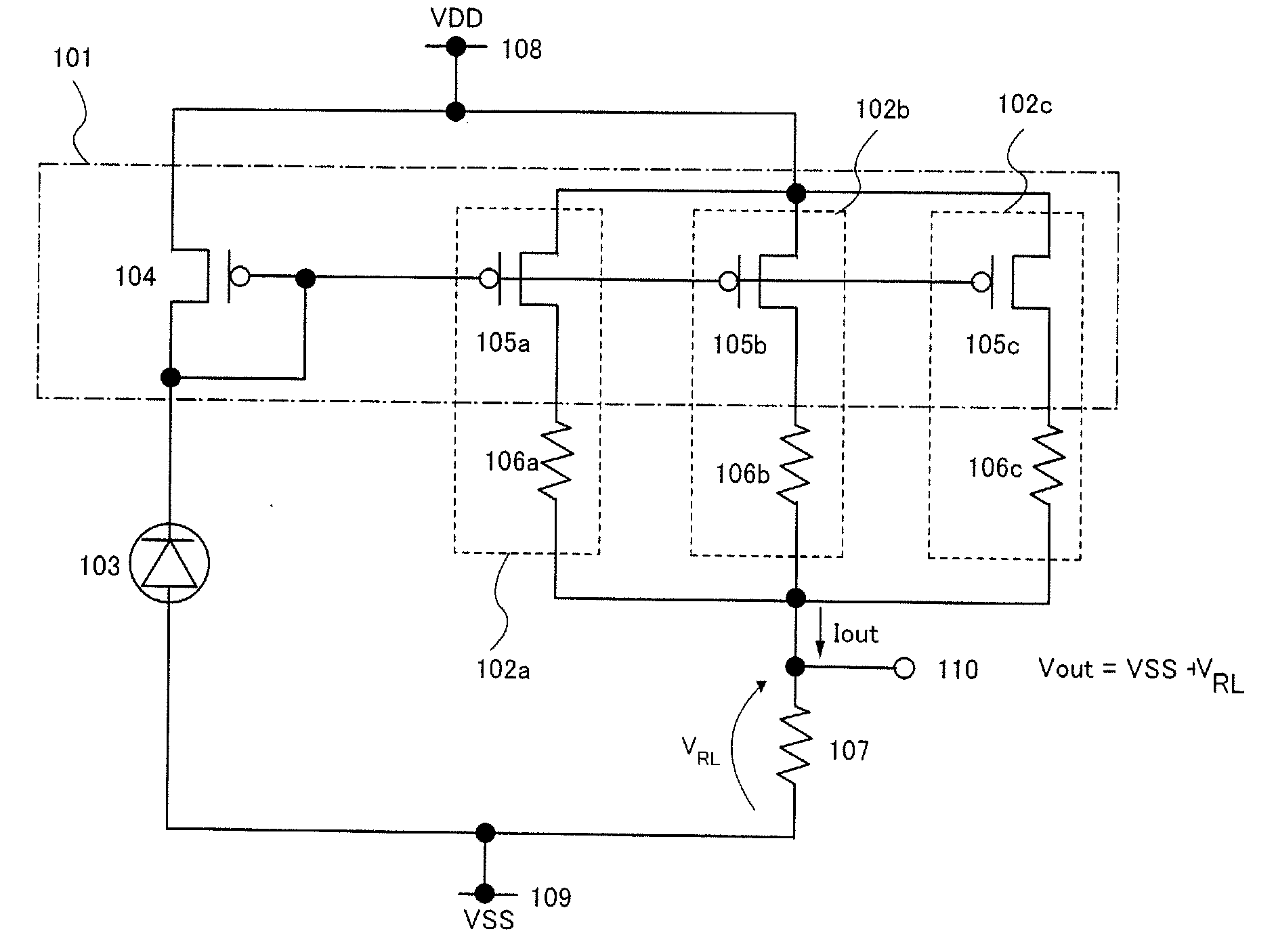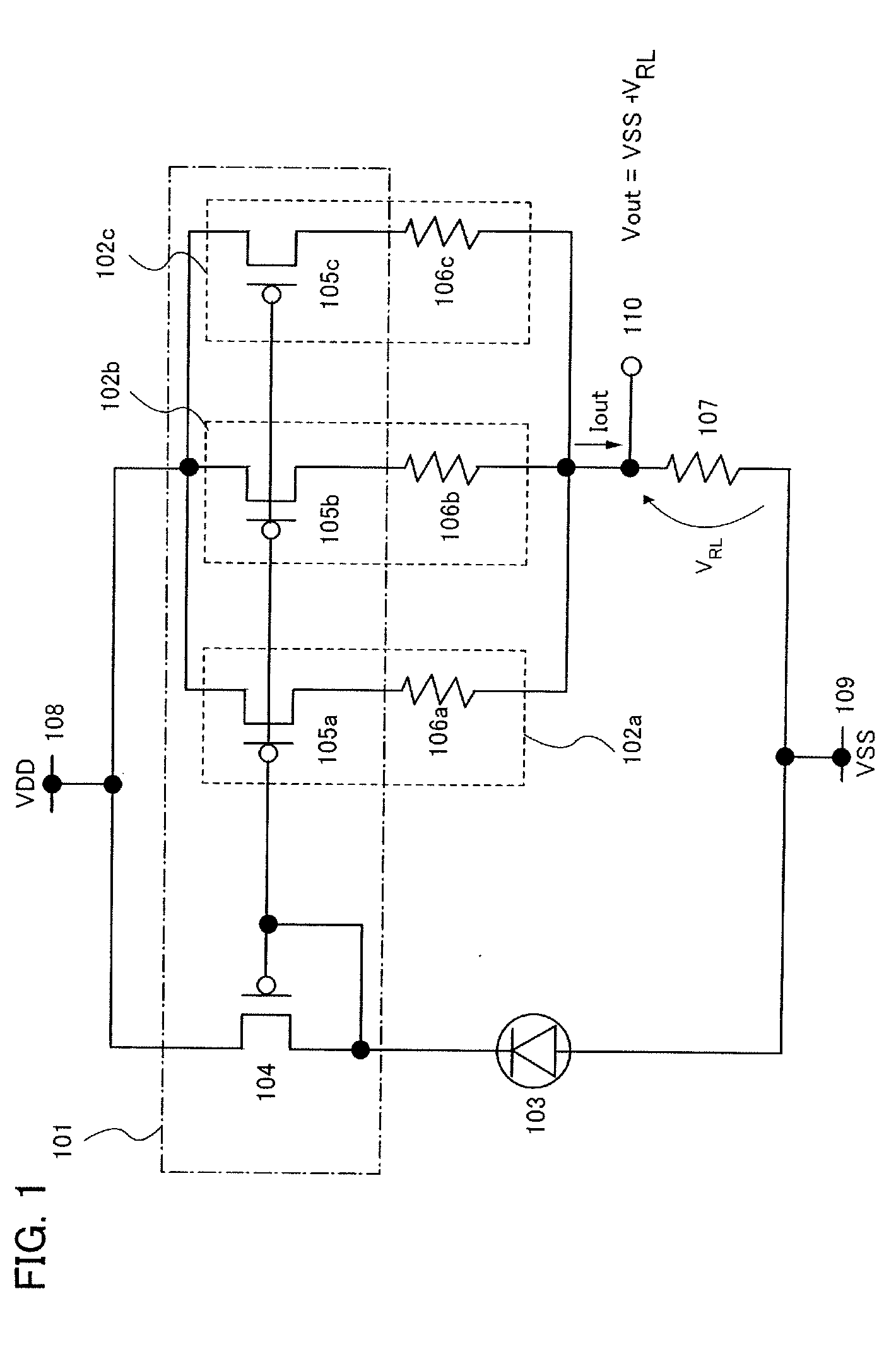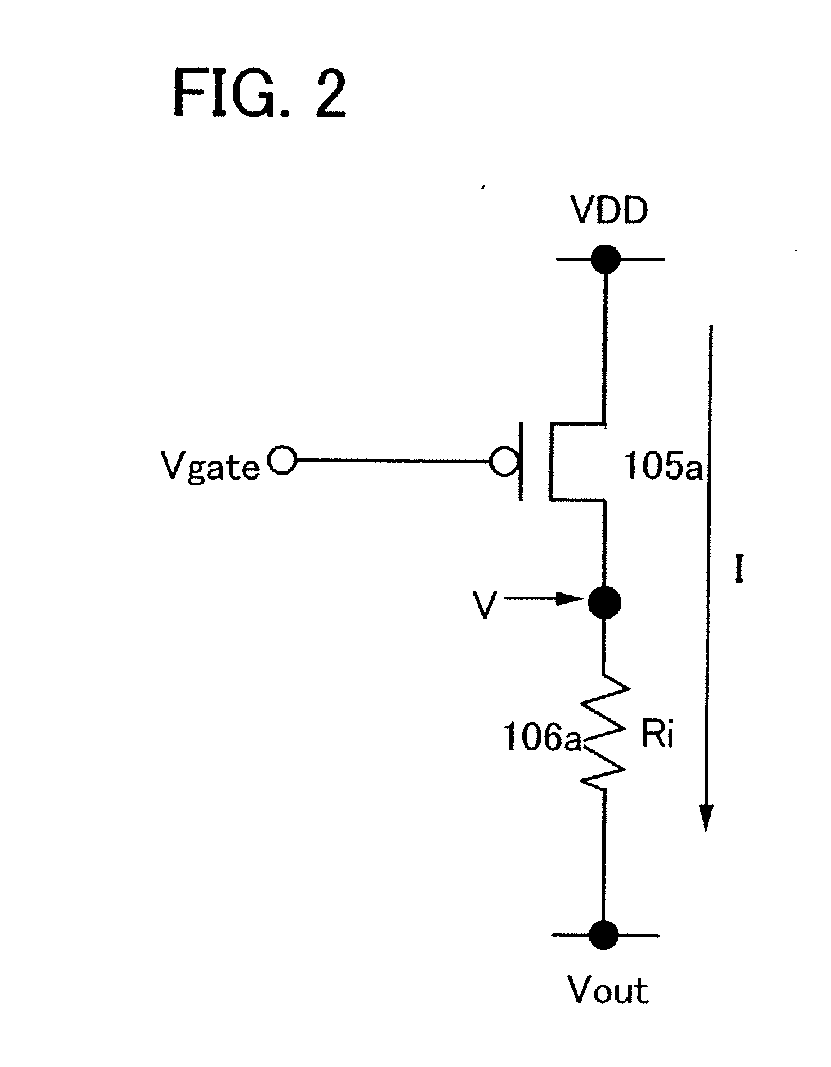Photoelectric conversion device and electronic device having the same
a technology of electronic devices and conversion devices, applied in the field of photoelectric conversion devices, can solve the problems of inability to obtain a wide dynamic range, and achieve the effects of wide application illuminance range, low illuminance, and high illuminan
- Summary
- Abstract
- Description
- Claims
- Application Information
AI Technical Summary
Benefits of technology
Problems solved by technology
Method used
Image
Examples
embodiment mode 1
[0035]This embodiment mode will be described with reference to accompanying drawings. FIG. 1 illustrates a circuit configuration of a photoelectric conversion device in Embodiment Mode 1 of the present invention.
[0036]The photoelectric conversion device in this embodiment mode includes a photoelectric conversion element 103, a current mirror circuit 101 which is an amplifier circuit for amplifying an output current (also referred to as a photocurrent) from the photoelectric conversion element 103, three internal resistors 106a to 106c, a load resistor 107, a high potential side power supply line 108, a low potential side power supply line 109, and an output terminal 110. The current mirror circuit 101 includes a reference side transistor 104 and three output side transistors 105a to 105c.
[0037]Note that in FIG. 1, the reference side transistor 104 and the output side transistors 105a to 105c are p-channel field effect transistors.
[0038]Note that in this specification, a power suppl...
embodiment mode 2
[0094]This embodiment mode will be described with reference to drawings. FIG. 21 illustrates a circuit configuration of a photoelectric conversion device in Embodiment Mode 2 of the present invention.
[0095]The photoelectric conversion device in this embodiment mode includes a photoelectric conversion element 103, a first current mirror circuit 101 and a second current mirror circuit 211 which are amplifier circuits for amplifying an output current (also referred to as a photocurrent) from the photoelectric conversion element 103, three internal resistors 106a to 106c, a load resistor 107, a high potential side power supply line 108, a low potential side power supply line 109, and an output terminal 110. The first current mirror circuit 101 includes a first reference side transistor 104 and three first output side transistors 105a to 105c. The second current mirror circuit 211 includes a second reference side transistor 212 and a second output side transistor 213.
[0096]In FIG. 21, al...
embodiment mode 3
[0160]This embodiment mode will show a manufacturing method of the photoelectric conversion device described in the above embodiment modes as an example using cross sectional views with reference to FIGS. 8A to 8D, and FIGS. 9A to 9C.
[0161]First, a photoelectric conversion element and a field effect transistor are formed over a substrate (a first substrate 310). In this embodiment mode, an AN 100 which is one of glass substrates is used for the substrate 310. In forming the field effect transistor over the substrate by using a thin film transistor, the photoelectric conversion element and the thin film transistor can be manufactured in a continuous process, and therefore, the photoelectric conversion device can be produced in large quantities, which is an advantage.
[0162]A silicon oxide film including nitrogen (with a film thickness of 100 nm), which serves as a base insulating film 312, is formed by plasma CVD, and a semiconductor film such as an amorphous silicon film including hy...
PUM
 Login to View More
Login to View More Abstract
Description
Claims
Application Information
 Login to View More
Login to View More - R&D
- Intellectual Property
- Life Sciences
- Materials
- Tech Scout
- Unparalleled Data Quality
- Higher Quality Content
- 60% Fewer Hallucinations
Browse by: Latest US Patents, China's latest patents, Technical Efficacy Thesaurus, Application Domain, Technology Topic, Popular Technical Reports.
© 2025 PatSnap. All rights reserved.Legal|Privacy policy|Modern Slavery Act Transparency Statement|Sitemap|About US| Contact US: help@patsnap.com



